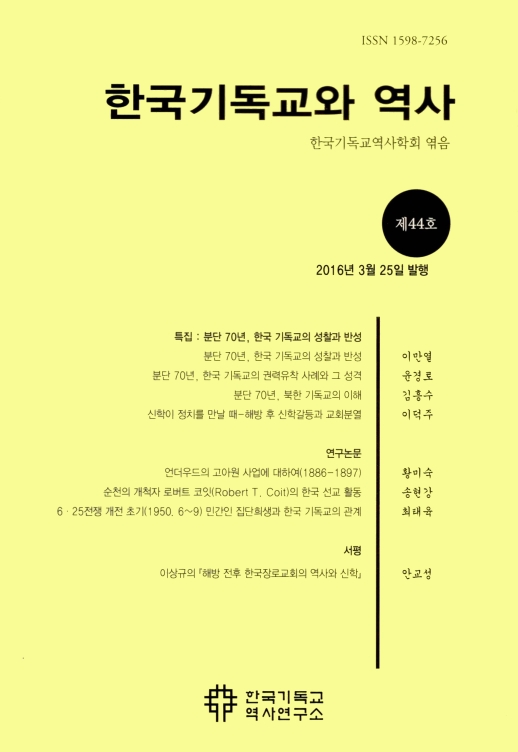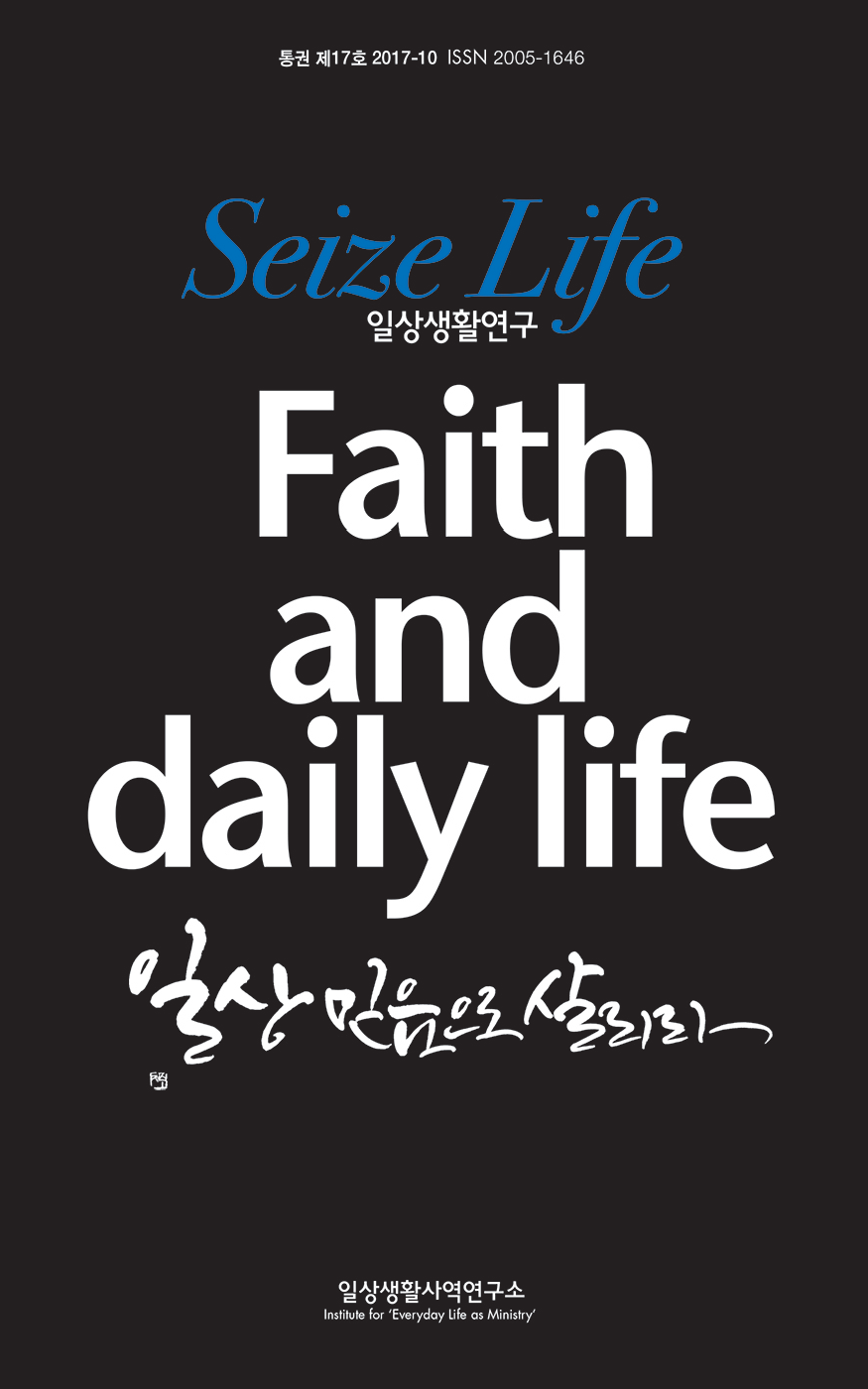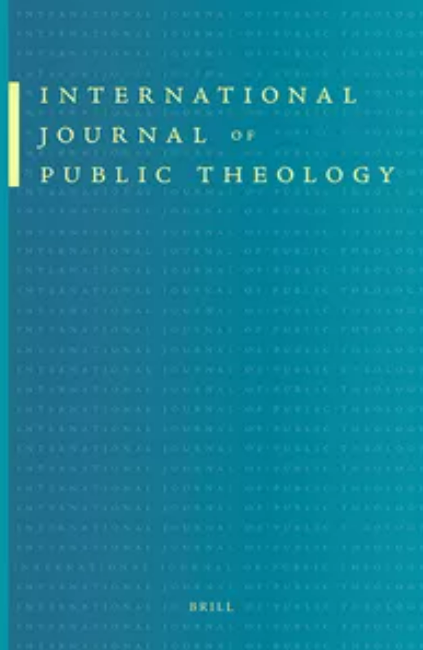지난 70년 동안 북한 기독교는 조선그리스도교련맹, 가정교회, 봉수교회, 지하교회의 형태로 재편과 변형을 거쳐 왔다. 조선그리스도교련맹과 공인교회가 북한정부의 종교이용과 간섭으로 만들어진 재편된 형태의 기독교에 속한다면, 가정교회와 지하교회는 종교탄압 환경에서 생긴 전통적 기독교의 변형이라고 할 수 있다. 북한 기독교를 이해하려면 조선그리스도교련맹과 교회들이 어떤 환경과 동기에서 재편되거나 변형되어 왔는가를 찾아볼 필요가 있다. 조선그리스도교련맹과 교회들의 결성과 건립 동기에 관심을 갖는 이유는 그것들에 대한 남한교회의 오래된 부정적 인식 때문이다. 남한의 연구자들과 교회 지도자들은 종교기구로서의 조선그리스도교련맹, 봉수교회, 장충성당의 종교적 아이덴티티를 부인하고 그것들을 위장 종교집단, 가짜교회, 대남적화통일을 목표로 하는 단체라고 주장하였다. 교회사가들 역시 냉전시대의 반공주의를 표준으로 삼고 북한 기독교사를 “수난사, 박해사, 소멸사”로 이해했으며 따라서 1970년대 이후의 조선그리스도교련맹과 봉수교회를 위장 조직으로 의심받게 만들었다. 북한 기독교사 연구에 연구자들의 분단의식이 반영되고 있는 셈이다. 정말 조선그리스도교련맹과 봉수교회가 일말의 기독교적 정체성조차 가지고 있지 않을까? 봉수교회와 칠골교회의 구성원들은 모두 가짜 신자인가? 이런 문제들을 염두에 두고 이 글은 먼저 조선그리스도교련맹의 결성 동기와 강령을 살펴보았다. 조선그리스도교련맹의 결성에서 강한 정치적 동기를 발견할 수 있지만, 결성자들에게서 기독교의 발전과 기독교적 박애에 대한 신앙적 관심도 찾아볼 수 있다. 기독교적 박애라는 것은 그리스도교련맹 결성을 주도한 사람들을 이해하는 데 있어서 반드시 검토해봐야 할 원칙이다. 이 글은 종교탄압 상황 속에서의 기독교의 존속 문제도 가정교회, 봉수교회, 지하교회를 통해서 살펴보았다. 1980년대의 교회건립은 국가의 종교이용보다는 주체사상과 연방제통일이라는 정치환경 속에서 진행된 주체적 기독교의 실험이라는 측면에서 그것의 한계와 가능성을 생각해 보았다. 지하교회는 여러 증언의 수집과 비교, 대조를 통해서 그 실체가 드러날 것이다.
Korea Christian Federation, house churches, Bongsu church, and underground churches are forms of the reorganization and transformation of the North Korean Christianity during the past seventy years. While the Korea Christian Federation and official churches belong to the reorganized Christianity made of religious intervention and religious utilization of North Korean government, house churches and underground churches are transformation of the Christianity formed in the environment of religious repression. This essay explores that on what environment and for what motive the North Korean Christianity has been reorganized and transformed. Our concern about the motives of the organization and establishment of the Korean Christian Federation and the churches grew out of the negative understanding of them by South Korean Churches. South Korean church leaders and experts of North Korean religions have denied the religious identity of the Korean Christian Federation and its churches, and have argued that they were the camouflage religious organizations and fake. Historians of Korean Christianity also have understood the history of North Korean Christianity as “history of suffering, history of persecution, history of disapperance” and made the Korea Christian Federation and Bongsu Church, which have come into being in after the 1970’s, have been distrustful. This shows that the division of the Korean peninsular has influenced upon the understanding and research into the history of North Korean Christianity. Do the Korean Christian Federation and Bongsu Church not have Christianity identity? Are all the members of the Bongsu Church and Chigol Church false believers? Keeping these questions in mind, this paper, first of all, investigated the motive and articles of the Korean Christian Federation organized in November 1946. Though a strong political motive is found in the organization of the Korean Christian Federation, it is true that we could find religious concern over the development of Christianity and Christian philanthropic sprit from the organizers of the Federation. The problem of Christian philanthropy mentioned in the Federation’s articles should be investigated more deeply to understand the church leaders who organized the Korea Christian Federation. This essay analyzed also the problem of the continuance of Christianity under the religious suppression through the house churches, Bongsu Church, and underground churches, and argues that church establishment of the 1980’s can be understood as an religious experiment of Christianity under the surroundings of Juche thought and Koryo Confederal System. We do not know what the underground churches really are, but the substance of the underground churches will be uncovered through the collection and analysis of testimonies on the North Korean Christianity.







